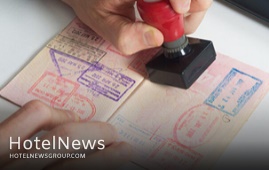
The Foreign Ministry Director-General for West Asia has said that Iran considers easing visa rules for Afghan nationals. "Facilitation of the legal entry of Afghan citizens into Iran is the best way to combat illegal entry, human trafficking, and many norm-breaking behaviors," ISNA quoted Seyyed Rasoul Mousavi as saying on Wednesday. "Today (Tuesday), only in Herat, 1509 people [Afghans] were granted entry visas to Iran," the top diplomat tweeted. Recently, Seyyed Hassan Mortazavi, Iran’s Deputy Ambassador to Afghanistan, said that twelve aid cargoes carrying Iranian aid have been delivered to the people of Afghanistan. He noted that the Leader of the Islamic Revolution has emphasized the continuation of humanitarian assistance to “the oppressed” people of Afghanistan. Mortazavi also noted that the humanitarian aid from the Islamic Republic to the people of Afghanistan has been continuing over the past three months, during the time that Afghanistan has been the scene of drastic political changes.
Create: Nov 27, 2021 Edit: Nov 27, 2021 Regional News
United Nations World Tourism Organization (UNWTO) and the Council of Europe will work together to develop the opportunities tourism offers to local communities and to enhance the tourist experience along the European region’s Cultural Routes. The joint actions will be aimed at recognizing the added value that cultural routes offer for sustainable tourism development, cultural heritage safeguarding and intercultural dialogue. The collaboration will also further highlight the routes’ potential for advancing social, economic and cultural development, benefitting both Europe and its partner countries by strengthening cultural and historical ties. International Year of Creative Economy 2021 The two organizations will be collaborating first in the sphere of creative tourism, to showcase good practices in line with the International Year of Creative Economy 2021, and further promote destinations encompassed by the Enlarged Partial Agreement on Cultural Routes (EPA) of the Council of Europe. UNWTO Secretary-General Zurab Pololikashvili said: “All along the Cultural Routes, tourism has the power to support jobs and create other development opportunities for communities. It is also a chance to protect and promote cultural heritage and to celebrate creativity.” Council of Europe Secretary General Marija Pejčinović Burić adds: “The Cultural Routes programme plays an important role in the promotion of Europe’s rich cultural heritage, in addition to being an effective tool for fostering intercultural dialogue and transnational co-operation. We are delighted that the UN’s World Tourism Organisation will contribute its expertise to the Cultural Routes programme on the basis of this Memorandum of Understanding.” Enhancing accessibility The partnership will also see UNWTO and the Council of Europe harness their individual expertise and technical capabilities to further develop Cultural Routes, through research, training and policymaking. Special attention will be paid to the mapping of Cultural Routes and to promoting greater accessibility for persons with disabilities and specific access requirements.
Create: Nov 26, 2021 Edit: Nov 26, 2021 International News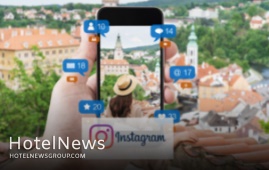
UNWTO and Instagram have joined forces to produce a ‘Tourism Recovery Playbook ’, and so help destinations and business harness the power of digital and visual storytelling to reach new audiences and return to growth. This first ever partnership with Instagram forms part of UNWTO’s wider shift towards harnessing the power of digital innovation to drive the restart of tourism, especially local and sustainable tourism. It also represents Instagram’s recognition of tourism as a leading provider of livelihoods and global opportunity, welcoming UNWTO as partners in a first structured effort to use the platform as a tool to help kickstart the sector’s recovery. The partnership was announced against the backdrop of World Travel Market in London, the leading tourism trade fair where UNWTO brings together political and business leaders, and after of UNWTO amplifying tourism’s unified response to the climate emergency at the UN Climate Change Conference COP26 in Glasgow. Expert insights into storytelling for tourism UNWTO’s partnership with Instagram will show that safe, responsible travel is possible, and to illustrate how just one tourist can make a big difference The Recovery Playbook provides insights into making the most of the platform, from producing Reels to showcase destinations to using Guides and other tools to illustrate how the sector is ready to welcome tourists back safely and responsibly. It also explores the best ways to encourage renewed local travel, while raising environmental awareness. Alongside best practice and tips on effective tourism storytelling, the publication also features case studies of small businesses and destinations have successfully used Instagram to connect with key audiences during the pandemic. In his foreword to the Tourism Recovery Playbook, UNWTO Secretary-General Zurab Pololikashvili says: “As parts of the world begin cautiously opening up again, now is the time to be creative in showing why tourism matters – for individuals, for our communities and for our planet. UNWTO’s partnership with Instagram will show that safe, responsible travel is possible, and to illustrate how just one tourist can make a big difference.” “We know countless small businesses and destinations are ready to welcome the world back to their doorsteps,” said Asya Kislyuk, Policy Programs Manager at Instagram. “Instagram is proud to provide a playbook for people to help make it happen when the time is right – safely and sustainably.” Advancing UNWTO’s digital shift This first collaboration with Instagram builds on UNWTO’s ongoing turn towards greater use of digital tools and visual storytelling to make clear the relevance and importance of tourism to economies, societies, and planet. The Organization has accelerated this shift in its efforts to scale up Member support and enable them to better seize the advantages of digital communications platforms.
Create: Nov 23, 2021 Edit: Nov 23, 2021 International News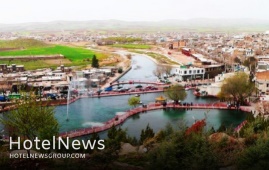
Nine tourism-related projects, which are planned to be carried out across the western province of Kermanshah are estimated to generate 135 jobs upon their completion, the provincial tourism chief has announced. The projects will be implemented in the cities of Kermanshah, Javanrud, Harsin, and Islamabad-e-Gharb, Jabbar Gohari said on Tuesday. A budget of 2.4 trillion rials ($58.4 million at the official exchange rate of 42,000 rials per dollar) will be channeled into the projects, which include accommodation centers, tourist complexes, traditional restaurants, and hotel hospitals, the official explained. Kermanshah embraces a variety of awe-inspiring historical sites, of which Bisotun and Taq-e Bostan are both on the UNESCO World Heritage list. Inscribed into the base of a towering cliff, Taq-e Bostan comprises extraordinary Sassanian bas-reliefs of ancient victorious kings divide opinions. Late afternoon is the best time to visit, as the cliff turns a brilliant orange in the setting sun, which then dies poetically on the far side of the duck pond. Bisotun is a patchwork of immense yet impressive life-size carvings depicting King Darius I and several other figures. UNESCO has it that Bisotun bears outstanding testimony to the important interchange of human values on the development of monumental art and writing, reflecting ancient traditions in monumental bas-reliefs.
Create: Nov 20, 2021 Edit: Nov 20, 2021 Regional News
Donald J. Trump’s family business has an agreement to sell its marquee Washington hotel, reaching a deal to fetch at least $375 million for a property that prompted ethical scrutiny and struggled to make money even as it drew steady crowds of lobbyists, lawmakers and Trump loyalists. The deal so far is what is known as a purchase and sale agreement, meaning a final sale of the Trump International Hotel has not taken place and may not happen until early next year, according to three people with knowledge of the matter. The sale of the lease of the hotel, which operates out of a landmark federal building on Pennsylvania Avenue, comes after years of financial losses at the property, which opened in 2016, shortly before Mr. Trump was elected president. Still, with the significant price of the planned sale, the Trump family is expected to turn a profit on the overall investment. The buyer of the lease is CGI Merchant Group, a minority-owned real estate investment firm in Miami, according to the people briefed on details of the pending transaction, which was reported earlier by The Wall Street Journal. CGI is exploring a deal to rename the hotel, based in the Old Post Office building, under the Waldorf Astoria luxury brand. The sale must first be approved by the General Services Administration, the federal agency that controls the property. From the time of its opening, the hotel immediately drew crowds of Trump supporters and favor-seekers. For a businessman president, it was the ideal bridge between his two worlds: a Trump hotel five blocks from the Trump White House. This blurring between Mr. Trump’s business and his presidency fueled attacks from congressional Democrats who charged that he used the property as the hub of an influence-peddling operation.
Create: Nov 15, 2021 Edit: Nov 15, 2021 International News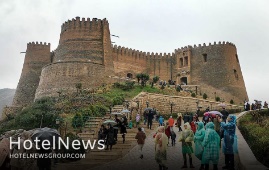
The construction of a fence wall has been completed around Falak-ol-Aflak fortress, an imposing monument of Sassanids, which dominates the capital city of Khorramabad in western Iran. “The wall has been constructed based on the original model and historical documents,” Lorestan province’s tourism chief said on Sunday. “Moreover, traditional materials have been used in the recent construction that has harmony with the fortress.” The unmissable eight-towered monument seems particularly dramatic when floodlit at night, offering picturesque views of its encircling crenelated battlements. Lorestan is a region of raw beauty that an avid nature lover could spend weeks exploring. The region was inhabited by Iranian Indo-European peoples, including the Medes, c. 1000 BC. Cimmerians and Scythians intermittently ruled the region from about 700 to 625 BC. One of the most prominent archaeological findings of the fertile region is the ancient “Luristan Bronzes”, which are noted for their eclectic array of Assyrian, Babylonian, and Iranian artistic motifs. Lorestan was incorporated into the growing Achaemenid Empire in about 540 BC and successively was part of the Seleucid, Parthian, and Sassanid dynasties.
Create: Nov 15, 2021 Edit: Nov 15, 2021 Regional News
Iran must rebuild trust with the global tourism market, the Head of the Iranian Tour Operators said on Sunday. The level of Iran’s health security and vaccination against coronavirus should be advertised internationally to gain further trust from the global tourism market, Ebrahim Pourfaraj said. The health and safety level in Iran is a concern for foreign tourists, he noted, ISNA reported. It is the responsibility of the Ministry of Foreign Affairs, embassies, economic and cultural attaches, and ministries of health and tourism to inform the world about Iran’s [great achievements in] public vaccinations, the official added. During the pandemic, Iran has maintained contact with global tourism markets and companies that worked with the country in the past, especially since virtual communication and meetings have been held, he mentioned. “Following the resumption of the tourist visa, visitors from Russia and France have traveled to Iran and we are currently expecting a smaller number of tourists in Iran due to the current situation in the world,” he explained. There is, however, speculation that in the spring of 2022, the next high season of travel to Iran, the number of tourists and trips will increase, he added. In January, the official announced that international tourism flow to Iran will return to normal in 2022. Although there are requests for traveling to Iran in the current year (2021), most travel agencies and tour operators believe that the flow will go back to normal in the next year, he said. Beginning mass vaccination against the coronavirus will provide better and safe conditions for international travels in 2022, he added. Last November, the World Tourism Organization announced that international tourist arrivals to Iran plunged 72% during the first eight months of 2020 when compared to 2019, highlighting the severe impact of COVID-19 as the main factor. Some experts believe Iran is still somehow “unknown” for many potential travelers due to Western “media war”. The ancient land is potentially a booming destination for travelers seeking cultural attractions, breathtaking sceneries, and numerous UNESCO-registered sites. Under the 2025 Tourism Vision Plan, Iran aims to increase the number of tourist arrivals from 4.8 million in 2014 to 20 million in 2025.
Create: Nov 15, 2021 Edit: Nov 15, 2021 Regional News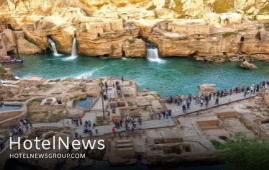
The UNESCO-registered Shushtar Historical Hydraulic System has been closed to visitors amid safety concerns after its western side was announced to be “unstable”. “Shushtar Historical Hydraulic System was closed to the public until further notice due to the unstable conditions of the western wall,” Mehr reported on Sunday. “Cultural heritage experts have warned for years about the instability of this part of the World Heritage,” the report said. Earlier in October, a local official announced that leakage of the site, which is known globally as a masterpiece of creative genius, is an immediate concern and needs to be restored. “To prevent water leakage in the historical structure, which could result in its destruction, short-term measures are taken,” the official said, Mehr reported. Studies and research are being conducted and meetings with consulting engineers are underway to find a way to cause the least damage to this ensemble, the official added. The ancient hydraulic system comprises bridges, weirs, tunnels, canals, and a series of ancient watermills powered by human-made waterfalls. It is named after an ancient city of the same name with its history dating back to the time of Darius the Great, the Achaemenid king. Inscribed on the UNESCO World Heritage list in 2009, the Shushtar Historical Hydraulic System may testify to the heritage and the synthesis of earlier Elamite and Mesopotamian knowhow. According to UNESCO, the ensemble was probably influenced by the Petra dam and tunnel and by Roman civil engineering. The property is as rich in its diversity of civil engineering structures and its constructions as in the diversity of its uses (urban water supply, mills, irrigation, river transport, and defensive system). The Shushtar Historical Hydraulic System testifies to the heritage and the synthesis of earlier Elamite and Mesopotamian knowhow; it was probably influenced by the Petra dam and tunnel and by Roman civil engineering. “The hydraulic system has been considered a Wonder of the World not only by the Persians but also by the Arab-Muslims at the peak of their civilization,” according to the UN cultural body. Furthermore, one of its main canals is a veritable artificial watercourse that made possible the construction of a new town and the irrigation of a vast plain, at the time semi-desert. UNESCO says that the Shushtar Historical Hydraulic System demonstrates outstanding universal value as in its present form, it dates from the 3rd century CE, probably on older bases from the 5th century BC. It is complete, with numerous functions, and large-scale, making it exceptional.
Create: Nov 15, 2021 Edit: Nov 15, 2021 Regional News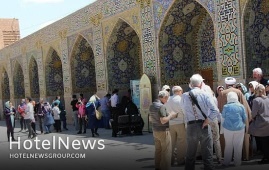
A number of Russian travel agents and tour operators have recently arrived in Iran for a week-long familiarization tour, Mehr reported on Friday. The group, which entered the Islamic Republic on Thursday through Imam Khomeini International Airport, was scheduled to travel earlier this year following the implementation of Iran-Russia visa waiver for group tours; however, because of coronavirus restrictions, they were forced to postpone the journey, the report added. Supported by Mahan Airlines, the group will tour the southern cities of Kerman, Mahan, Shiraz, and central city of Isfahan as well as the UNESCO-registered Lut Desert in the barren heartland of Iran. The tour will be held observing strict health protocols and social distancing rules. Earlier in June, the former Iranian tourism minister Ali-Asghar Mounesan finalized work on a bilateral visa-free agreement for tourist groups with Russia. In 2017, former Iranian President Hassan Rouhani and his Russian counterpart Vladimir Putin inked a visa-free agreement for tourist groups. A joint technical committee has been developing an action plan for the previously agreed visa-free travel arrangements since then, in order to put the agreement into effect. However, the outbreak of the coronavirus put a halt to the agreement. Based on the 2017 agreement tour groups of 5 to 50 people heading to [easternmost parts of] Russia from Iran or vice versa are granted a visa-free stay of up to 15 days. Back in May, Mostafa Sarvari, who presides over the tourism marketing and advertising office of the Iranian Tour Operators Association, announced many Russian tourists are eager to travel to Iran, recounting his Russian counterparts. “Many [potential] Russian travelers are motivated to visit novel and lesser-known destinations such as Iran that could be a safe and attractive destination,” he said. “According to Russian tourism experts, the feedback from Russian tourists who have traveled to Iran has been very positive, and its reflection, especially on social media, has caused a great deal of enthusiasm and interest.” According to Ebrahim Pourfaraj, who heads the Iranian Tour Operators Association, rounds of negotiations have been held between Iranian tour operators, travel marketers, and their Russian counterparts. “We’ve been commenced talks with some Russian travel agents to put Iranian destinations on their itineraries…. And the Iranian Tour Operators Association has also entered negotiations with Russian unions for outbound tours to attract more travelers from Russia. Pourfaraj says the majority of potential Russian travelers are unaware of the vast tourist attractions that exist in every corner of Iran. “The fact is that Iran’s political and economic relations with Russia are considered as good, but this has nothing to do with attracting tourists because it is directly connected with the Russian people. It is the Russian people who must choose Iran as their destination.” Maya Lomidze, executive director of the Association of Tour Operators of Russia, had told Sputnik that the visa agreement may significantly surge the tourist flows between the two countries, just like it happened when a similar deal was signed between Russia and China. The flow of Iranian tourists to Russia increased by 50-70 percent following the operation of direct flights that connect Iran to St. Petersburg, Moscow, and Sochi, she said. Iran is taking proactive measures in line with the long-term goal of 20 million tourists by 2025.
Create: Nov 9, 2021 Edit: Nov 9, 2021 Regional News
The Federal Communications Commission has authorized a satellite internet project from Boeing first proposed in 2017. Boeing can now move forward with building, launching, and operating its own broadband internet network from space, joining its main aerospace competitor SpaceX. Boeing’s plan involves placing 132 satellites into low Earth orbit at an altitude of 1,056 kilometers (about 656 miles). Another 15 will be launched to “non geostationary orbit” at an altitude between 27,355 and 44,221 km (16,998 to 27,478 miles). The company says it wants to use the satellites to offer “broadband internet and communications services to residential consumers, government and business users in the United States, Puerto Rico and the US Virgin Islands” while the network gets built out, and on a global basis once it’s complete. All 147 satellites would broadcast in the V-band, a higher-frequency slice of the wireless spectrum than the Ka and Ku bands used by SpaceX’s Starlink network or Amazon’s yet-to-be-deployed Project Kuiper satellites. Using V-band could allow for faster data transfer rates but runs a greater risk of interference because the higher frequencies have more trouble penetrating solid objects. (SpaceX has plans to use the V-band in some future satellites, and so does OneWeb. The Ka and Ku bands are also used by satellites that provide in-flight internet on commercial airlines.) SPACEX HAD TOLD THE FCC IT WAS CONCERNED BOEING’S NETWORK WOULD CROWD LOW EARTH ORBIT SpaceX has previously expressed concern that Boeing’s proposal to launch into already-crowded low orbits could increase the risk of a collision with other satellites. In 2019, SpaceX said to the FCC that it believed Boeing’s network would create a “clear danger of harmful interference,” according to Reuters. SpaceX’s Starlink satellites orbit the Earth at an altitude of around 550 km (roughly 342 miles), which is around where OneWeb’s internet satellite constellation can be found (and where Amazon’s satellites will go once they launch). SpaceX and OneWeb narrowly avoided a collision earlier this year. Boeing now has six years to launch half of its satellite constellation and nine years to deploy the entire network. The company had asked the FCC to loosen those requirements — it wanted to only commit to launching five satellites in the first six years, and asked for a 12-year window to launch the entire constellation — but the commission denied that request, according to the order published Wednesday. By comparison, SpaceX and Amazon have far grander plans for their networks, with each consisting of thousands of satellites. Boeing is a major satellite manufacturer, and so it spent the years before and after its initial 2017 proposal selling to early space-based internet providers as the market matured. But providers are now expected to collectively generate more than $50 billion by 2031, which could explain why Boeing bothered slogging through four years of the approval process.
Create: Nov 5, 2021 Edit: Nov 5, 2021 International News
Three Qajar-era (1789-1925) caravanserais in Tabas, eastern South Khorasan province, have recently been demarcated help their legal boundaries and properties, a local tourism official has said. “New boundaries have been defined for Khan, Chehel Payeh, and Deh-e Mohammad caravanserais in a bid to curb illegal constructions within their boundaries,” Parisa Jamshidi announced on Sunday. The caravanserais, which are among the candidates for a collective inclusion in UNESCO’S cultural heritage list, has been recently restored, the official noted. Over 70 billion rials ($1.7 million at the official exchange rate of 42,000 rials per dollar) has been invested in the restoration projects of the historical inns so far, she added. Caravansary (also Caravanserai or Caravansaray) is a building that served as the inn of the Orient, providing accommodation for commercial, pilgrim, postal, and especially official travelers. According to Encyclopedia Iranica, from the number of surviving caravansaries and their sizes, it is clear that in Safavid and Qajar times there was a state architectural department that was specifically concerned with the construction of caravansaries and stations on the overland routes. Furthermore, in the cities, several caravansaries were erected as lodging houses, depots, and commercial offices in the vicinity of the bazaars. A typical caravansary consists of a square or rectangular plan centered around a courtyard with only one entrance and arrangements for defense if necessary. Whether fortified or not, it at least provided security against beasts of prey and attacks by brigands. Iran’s earliest caravanserais were built during the Achaemenid era (550 -330 BC). Centuries later, when Shah Abbas I assumed power from 1588 – to 1629, he ordered the construction of network caravanserais across the country. Such roadside inns were originally built in various epochs along ancient caravan routes in the Muslim world to shelter people, their goods, and animals. The former Silk Roads may be the most famous example dotted by caravanserais.
Create: Nov 3, 2021 Edit: Nov 3, 2021 Regional News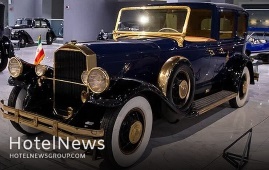
Following years of restoration and renovation, Iran Historical Car Museum in western Tehran has reopened its doors to the public, featuring a magnificent collection of rare classic, vintage, sports cars, carriages, and motorcycles.Highlights of the museum include a gold-plated limousine, the world’s only Panther-Laser car produced, a Silver Ghost Rolls-Royce once owned by the Qajar King, Ahmand Shah (r. 1909 – 1925), as well as a royal carriage belonging to Nasereddin Shah of Qajar.In an interview with the Tehran Times on Sunday, the director of the museum Mohammad Fa’al, said: “The 1922 Rolls-Royce, a Morris Oxford Bullnose, and a Fiat Tipo 519 constitute the three oldest cars of the collection.”“The building of the museum underwent restorations as of 2005 as you can see the images of the restoration of the building and cars have been installed on the walls of the museum. Moreover, we refurbished a dozen other cars from our treasury and added them to the newly-opened museum.”“The museum has four main halls, the first of which bears the oldest vehicles of the collection, amongst them the Rolls-Royce Silver Ghost that was belonging to Ahmad Shah Qajar,” he said. Hall 2 is dedicated to American and Mercedes-Benz vehicles, and Hall 3 is devoted to the official and ceremonial cars, which include various models of Rolls-Royces and Mercedes. Hall 4 is also dedicated to sports and super sports cars. In response to a question about the number of vehicles, the director said: “There are currently 102 cars in the treasury in addition to 55 cars that are currently on display.” “Of course, what you now see in here is not all our cars, and we have a treasury that acts as a support for the museum, and it has cars that are being renovated over time and replaced with these existing cars in order to preserve the charm of the museum.” The museum owns the largest collection of Mercedes-Benz 600 in the world. “We have the largest collection of Mercedes-Benz 600 in the world with 21 units. The Mercedes-Benz Museum itself has three units of the 600 model…. the Mercedes-Benz 600 itself is designed and built with different rooms and its function is only for ceremonies and this model has different rooms some having hardtop or custom-made sunroofs,” the director of the museum explained. He said that the museum owns all models of Mercedes-Benz 600, which is very unique. “Moreover, we have all models of Mercedes-Benz 600 that have been produced by the German company; four of which are on display here in the museum, and 17 are being kept inside the treasury.” Furthermore, Fa’al added 21 classic Rolls-Royces are being kept in the museum and its treasure trove. “Home to 21 [classic] Rolls-Royces, Iran Historical Car Museum is the second-largest treasure trove of those vehicles after the Rolls-Royce Museum.” Talking about the values of cars he explained, “all these cars are valuable and it is impossible to say which one is better. We can say which one is more beautiful and which has a more attractive design, but we cannot say which is more valuable.” “However, the classification of cars in terms of value depends on several factors: one is the age of the car, the other is its manufacturer brand and design technology. And there are decorative items used in cars. For instance, a car in which is gold plated and is decorated with jewelry is obviously more valuable than an ordinary one….” Responding to a question concerning restoration, Fa’al said all the processes of rebuilding cars are fully documented and all phases are photographed and evidence is available. The age of the classic cars According to Brinatica, the decade 1925–35 was notable not only for the appearance of many new small automobiles but also for the building of many ultra-large ones. The years from 1925 to 1948 are cited by collectors of automobiles as the “classic years,” a period that saw the rise of the luxurious fast motorcar to a peak it seems unlikely to reach again. The first name in this field was Rolls-Royce Ltd., founded in 1906. Most Rolls-Royce chassis are designed for limousine and large sedan bodies, but the firm once made a comparatively light car (called the Twenty), and it has throughout its history produced fast models in addition to its regular line—e.g., after World War II, the Continental, built under the Bentley Motors Ltd. label. Other motorcars of this type included the Hispano-Suiza of Spain and France; the Bugatti, Delage, Delahaye, Hotchkiss, Talbot (Darracq), and Voisin of France; the Duesenberg, Cadillac, Packard, and Pierce-Arrow of the United States; the Horch, Maybach, and Mercedes-Benz of Germany; the Belgian Minerva; and the Italian Isotta-Fraschini.
Create: Nov 3, 2021 Edit: Nov 3, 2021 Regional News
